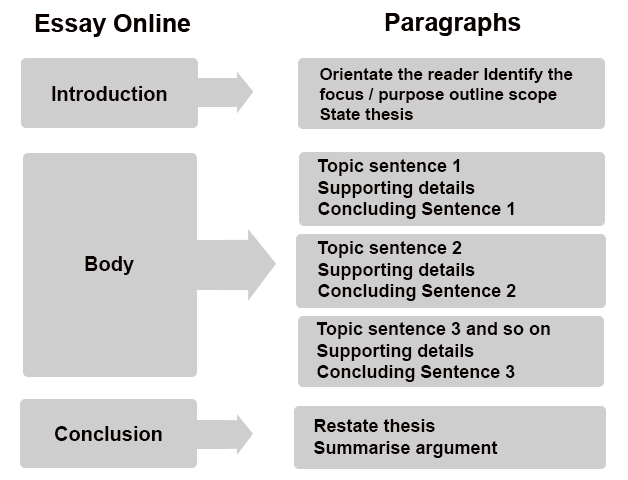Essay writing during the B-school selection process checks a candidate’s ability to possess his ideas in a coherent and logical argument. In this article, we bring you what a structure of an Essay look like.
In its most basic and traditional form, an essay has three elemental parts: introduction, body and conclusion. Each of these parts has a specific purpose which means the reader will be looking for expected features. The essay format includes:

Any introduction starts with a general opening statement which informs readers about the subject and gradually narrows to a specific thesis. The thesis, or thesis statement, tells the reader what you are going to say about your topic.
Thesis statements often come at the end of the introductory paragraph. A good introduction keeps a check on the following:
- Attract attention- quote, anecdote, statistic, etc.
- Give an overview of the essay's focus and flow
- Finish the introduction with the Thesis Statement
- It is NOT a summary but merely an introduction to what is to follow
- As a thumb-rule, it should not exceed 10% of the total length of the essay
- Writer's mind-block occurs the most here-so consider writing it AFTER the rest of the essay is clear to you
The body is made up of the paragraphs which support your thesis. These paragraphs contain the evidence, arguments, and examples that support your thesis. The number of paragraphs will depend upon on the number of ideas covered. Try to follow "one point one paragraph rule".
The following need to be kept in mind at this stage:
- Each main idea becomes a body paragraph
- Start each body paragraph by writing a main point
- Next, write supporting points for the main point
- ELABORATE on the supporting points with examples, facts or survey findings.
To be effective, body paragraphs must possess three important qualities:
- Unity: Focus on one main idea.
- Development : This occurs when the idea is elaborated in the paragraph. This elaboration usually consists of the evidence you have gathered from your research to support the point you are making in the paragraph.
- Coherence: Here, everything in the paragraph relates to and expands on the point you are making.
GDPI Essay Preparation Links:
The conclusion starts with a summary of the specific points of your essay, followed by a restatement of your thesis (usually in a slightly reworded form), and ends with a rather general statement about the implications of your thesis). Considering the time given to write an essay, please try to conclude concisely and do not try to introduce new idea.
Remember the following while writing a good conclusion:
- Review the main points (but DO NOT RESTATE them)
- Provide a final perspective on the topic- feel free to describe your feelings about the topic
- Remember not to violate the intent specified by the Thesis Statement
As you begin writing the essay, do remember that this is an assessment of not just your knowledge about the subject, but also your command over the language, the clarity and consistency of your thoughts and your ability to persuasively communicate your views on the subject.
